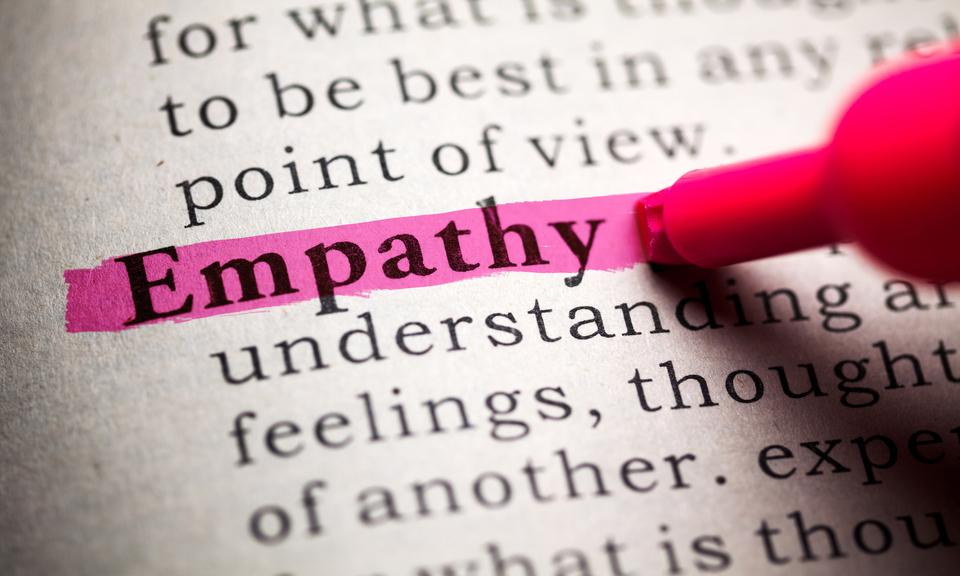
Written by
Published
Category
Key topics
Empathy is not weakness; it is strength, says Dr Ileana Stigliani, Assistant Professor of Design and Innovation
“Empathy is feeling with people,” declares Dr Brené Brown, one the of world’s foremost thinkers on the subject. With the exception of psychopaths and sociopaths, empathy is a cognitive ability we are all born with. Some are better than others at maintaining and cultivating it, but it can be reacquired through practice for those who have fallen out of the habit.
Why are we talking about empathy? When dealing with the complex problems thrown up by a rapidly changing modern world – problems that can be ambiguous and involve multiple layers of stakeholders with differing needs, expectations and power dynamics – empathic thinking is essential for a 21st century business.
We live in an era of big data. While there can be no denying its importance, the problem with quantitative data is it can only tell us what is happening; it cannot tell us why. Many companies fall into the trap of assuming that their customers think like them. This approach is deeply flawed and cannot take the place of real empathy, without which it is impossible to properly understand customers’ needs or wants. Collecting fine-grained qualitative data is the answer to obtaining this valuable insight as to why the phenomena represented by quantitative data occur.
So, how can we go about gathering this data? The best way is to conduct qualitative interviews – open-ended conversations with customers, preferably in the comfort of their own homes. This way it is possible to see the issues in their lives and lifestyles, and understand what’s really important to them. Or we might simply observe them: looking at how they shop and studying the activities in which they engage. These methods of research are small scale but they allow us to go deep down into the world and lives of customers, and find the root causes of their behaviour.
Many companies fall into the trap of assuming that their customers think like them. This approach is deeply flawed.
Focus groups are best avoided – usually they serve only to validate ideas that you already have. Another effective manner of gaining empathetic insight into your customers is to experience your products and services from their point of view. Deutsche Bank is an example of an organisation that champions this approach, by asking its employees to use its products and services as if they were customers.
Once the qualitative data has been collected we then seek to cluster it in recurrent themes, looking for actionable insights in each that will illuminate the way forward. These insights represent the springboard from which we can develop ideas that lead to solutions.
To illustrate, let’s consider the real-life case of Danish medical technology firm Coloplast, as outlined by Christian Madsbjerg and Mikkel B Rasmussen in a Harvard Business Review piece on this same subject. Coloplast was founded in 1954 to solve a specific problem: the poor quality of the homemade stoma bags designed to collect human waste following stomach surgery. Elise Sørensen, a nurse, conceived an idea for an ostomy bag with an adhesive ring after her sister Thora underwent an operation. Her idea was developed by civil engineer and plastics manufacturer Aage Louis-Hansen and his nurse wife Johanne Louis-Hansen, and a business was born.
The company went on to become a market leader in European healthcare products, with its ostomy bag division remaining its biggest. Come 2008, however, sales were stagnating in spite of a sophisticated R&D process that had led to a raft of advancements in locking mechanisms, adhesives and materials. Product development had been driven by two assumptions – that two years after surgery, patients were living essentially normal lives, and that production innovation should focus on improving the various features of an ostomy bag one-by-one.
When dealing with the complex problems thrown up by a rapidly changing modern world . . . empathic thinking is essential for a 21st century business.
Rather than simply ask why growth had stagnated, Coloplast decided to reframe the question and to think of it as a phenomenon. Despite all the metrics at hand, they realised that there was a lack of knowledge about their customers’ lives. Instead of asking, “Why are we not growing?” they asked, “What is it like to live with an ostomy bag?”
Embarking on a lengthy observation period of product users, they realised with horror a fundamental error in their thinking. Their metrics had shown a drop off in complaints at the two-year mark. This was not, however, because all was fine. Rather, users had by this stage altered their lives fundamentally in order to avoid situations that could lead to the embarrassment of a leak. Outside of a clinical setting, managing the issue was a completely different prospect; they had essentially given up on leading a normal life.
Despite all the improvements made in materials and adhesives, there could be no perfect product because there was no perfect patient. While Coloplast’s products worked perfectly on a uniform body that allowed for a perfect fit, patients came in a huge variety of shapes and sizes, and were often greatly changed by surgery and illness. The products therefore had to acknowledge this issue, which – amazingly – no one in this billion-dollar industry was anywhere near addressing. Thus new products designed to fit different body types were developed, calling for sweeping company-wide changes in R&D, technology, sales, marketing and customer service. Since the new line was introduced in 2010, Coloplast’s ostomy division has comfortably outperformed the rest of the industry. It has also had the associated benefit of giving employees a new lease of life, shifting from a technology-led to a human-centred focus.
Perhaps to some empathy sounds like a weak word; indeed some of my students – usually male – interpret it as such. But empathy is not weakness; it is strength.

